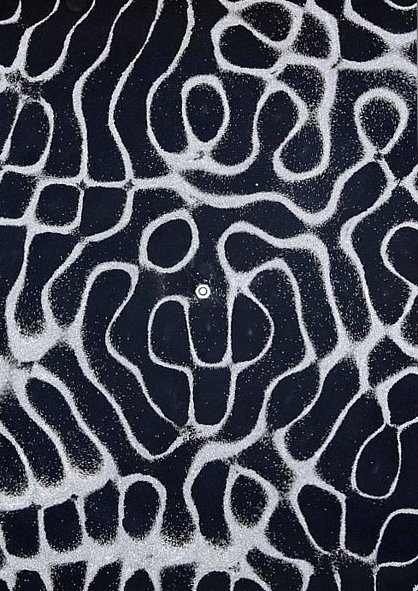
The image shown here is one result of a common physics experiment referred to as a Chladni Plate. A metal plate is secured in the center, sprinkled with salt and then
vibrated with a violin bow or electronic resonator. The bow sends vibrations through the plate, and based on the plate’s characteristics and the frequency the salt grains form various patterns. Different frequencies react differently in the steel plate as the salt seeks out the areas that are not vibrating. I suspect the complexity of these compositions would increase if two or more resonators were introduced at the same time or the plate support was not centered. If you have never seen this experiment performed you need to check out a YouTube video.
Clemson University performed a three dimensional version of this experiment by suspending and vibrating a drop of water using an ultrasonic field. The droplet oscillates between various forms based on the frequency and intensity of the field.
In addition, the droplet’s shape can be manipulated by changing its chemical composition. When the field reaches high strengths the droplet exhibits non-linear behavior. The video can be viewed at https://www.youtube.com/watch?v=5qmQynxqGjY.
Many have speculated that unseen energy, made visible in these experiments, has a profound influence on the human experience. As a visual artist it is interesting to consider the inverse. Do particular patterns, compositions or forms made with particular materials embody a pattern of energy that humans respond to? Does a highly trained artist’s intuition harness this phenomenon? Perhaps composition is not a benign decision based solely on personal preference but an intuitive decision with powerful, unseen influence.
